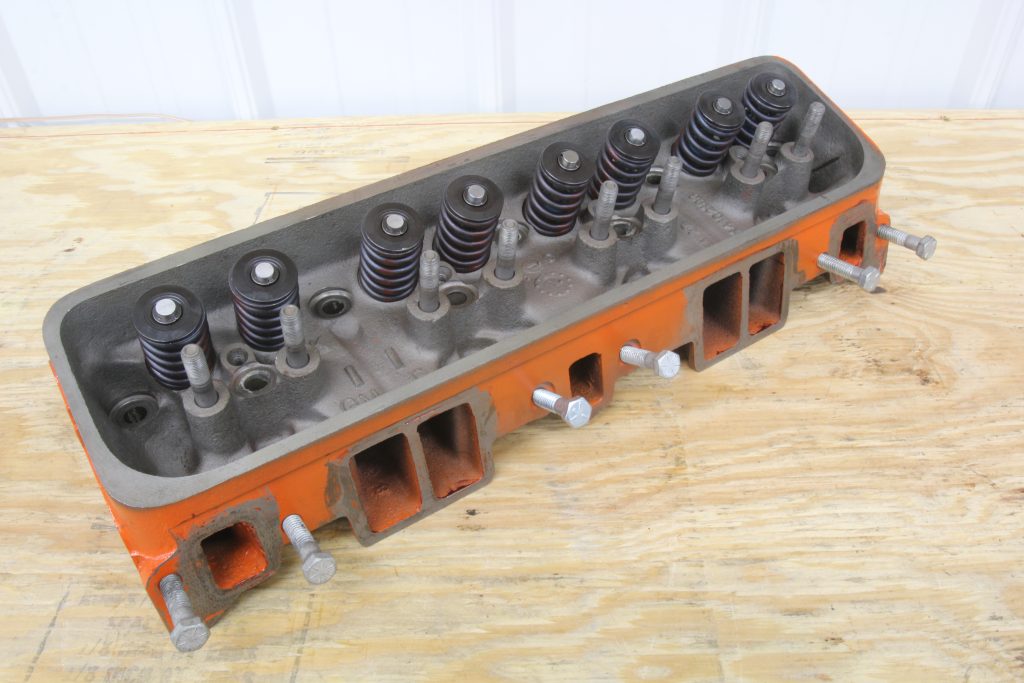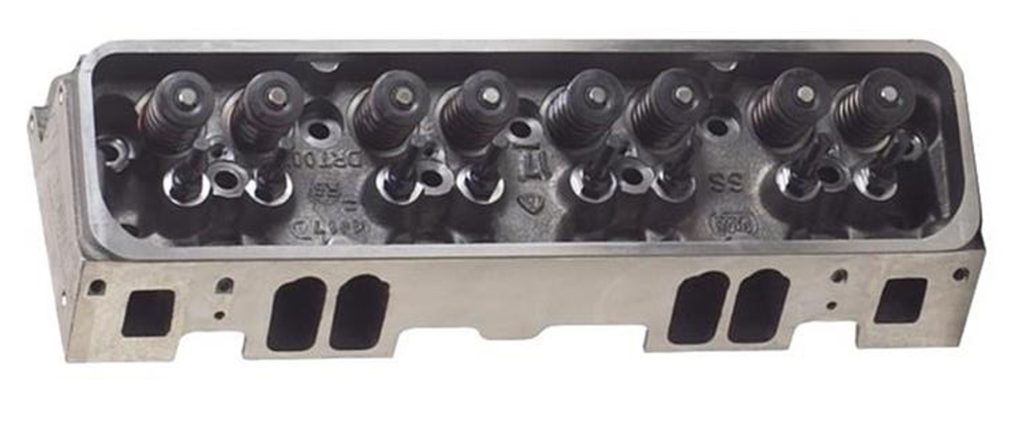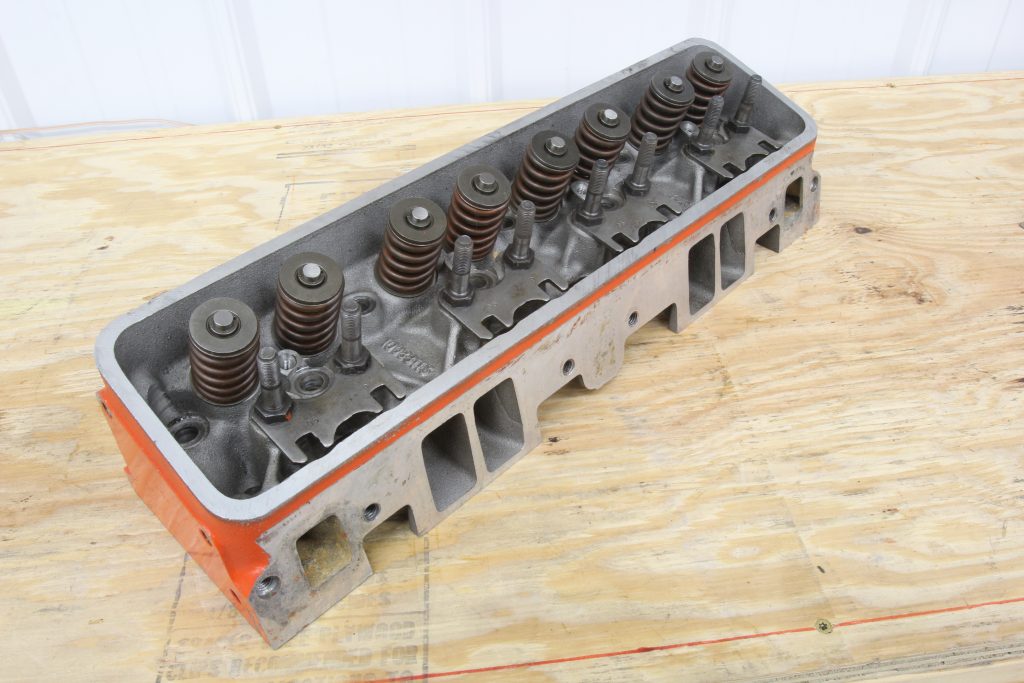I’m a little confused about cylinder heads for a small block Chevy. I thought all the heads interchanged. My buddy tells me that certain late model heads don’t use the same intake manifold—but he couldn’t tell me specifics. I was thinking of using a set of later model heads from a mid 1990s 350 TBI truck on an engine I’m building.
I think he’s blowing smoke but I thought I’d better ask around. Any input on this?
J.T.
While you might not want to hear this, your buddy is at least partly true—but he didn’t follow through with all the rest of the information.
Don’t worry, we can fill in the missing details. As it turns out, there are several different patterns and heads that you need to know about if you are going to start swapping cylinder heads from different engines.
We’ll warn you now—they do not freely interchange.
The Original SBC Cylinder Heads
The original small block Chevy started life in 1955 and those original heads established a pattern for the intake manifold with six bots per side that were machined perpendicular to the intake port face. We won’t get into all the different valve and combustion chamber sizes as there are multiple variations. Each change in chamber volume will have an effect on compression, so it’s important to know the numbers.
Roughly in 1969, Chevy added accessory bolt holes to the ends of the cylinder heads. But at least all these early head will interchange. These heads were used for 1955 through the mid 1980s and beyond.
The TBI Truck SBC Cylinder Heads

The first major change to the heads occurred when Chevy introduced throttle body injection (TBI) in trucks for 1987. For some reason, these engines from 1987 through 1995 employed a different intake manifold bolt angle for the two center intake manifold bolts on each head.
This configuration is unique to only these cylinder heads.
The aftermarket now makes performance, dual plane intake manifolds for these engines should you desire to upgrade. As an example, Edelbrock makes a Performer dual plane intake (PN EDL-2104) for these engines. Frankly, the heads are not all that great in terms of intake or exhaust flow so they certainly should not be considered for any performance application.
These heads were also the first to employ the centerbolt valve cover configuration where four small bolts are in the center of the valve cover as opposed to earlier, traditional heads using the four perimeter bolts.
Vortec SBC Cylinder Heads

To further complicate this issue, Chevrolet subsequently introduced the Vortec truck engines in 1996. The cylinder heads were an all new configuration where the intake manifold bolt pattern only employed four bolts total to attach the intake manifold to each head. These bolts were no longer perpendicular to the intake manifold face. Instead, these bolts are angled more vertically.
This cylinder head also used the centerbolt valve cover design, but based on the above description of the early TBI engines, not all centerbolt valve covers are Vortec truck heads.
The Vortec iron head is more highly prized because at the time of its introduction, it was the best flowing production cylinder head and even out-flowed the aftermarket Bow Tie head that Chevrolet offered at the time! These Vortec heads also featured a redesigned combustion chamber with a much smaller 64cc chamber volume and a new spark plug configuration as well.
Of all the later small block iron production castings, these Vortec heads are a much better choice for any mild small block engine build. The heads have become so in demand that several companies, including Summit Racing, now offer their own casting version of the original Vortec head (PN SUM-151124). Keep in mind that these heads use a 64cc chamber, which is great for use with engines with flat top pistons as this will drastically help compression on older engines with 76cc chambers and 8.5:1 compression.
A minor twist to this story is the mid-1980s through early 1990s Tuned Port Induction (TPI) engines. While this engine began its life in 1985 in Corvette and Camaros, these engines did not use the mid-1980s TBI bolt pattern. Instead, these heads used the traditional small block six-bolt-per-head intake manifold bolt pattern but did include the centerbolt valve cover configuration.
While some of these heads were aluminum—used in the Corvettes—they were not necessarily a good flowing head from a performance standpoint. The iron Vortec truck heads are far better flowing heads.
Why didn’t Chevy cast the Vortec heads in aluminum? That’s a really good question.

Gen. II LT1 SBC Cylinder Heads
Then to complicate things even further, the Generation II small block introduced in 1992, labeled the LT1, reversed the coolant path. Earlier engines pushed coolant through the block first and then into the heads. The LT1 pushed coolant through the head first then down into the block. For this reason, these Gen. II heads will not interchange with earlier engines, even though the head bolt pattern is still the same as the traditional engines.
***
So you can see that when it comes to small block Chevy heads, there have been quite a few changes over the years. But then, when the same basic engine has been in production for almost 70 years (if we count the LS Gen. III-IV and now Gen. V), it’s little wonder that there have not been many more.
| Year | SBC Cylinder Head Design |
|---|---|
| 1955 – Current | Standard Small Block Chevy Head |
| 1987 – 95 | Center Two Intake Manifold Bolt Angle Change |
| 1996 – 2000 | Vortec Head – Different Intake Manifold Bolt Pattern |
| 1992 – 97 | Gen. II LT1 |
| This short chart lists the four different basic configurations of small block Chevy cylinder heads. | |

The 400 small block heads were also different. They holes in the heads and in the block for cooling reasons. The block had no coolant flow in the block because of the larger bore size.
I have used a few TPI units with older heads. Just had to use a dremmel on the base to get the bolts ro the head bolt holes..they seal and work fine